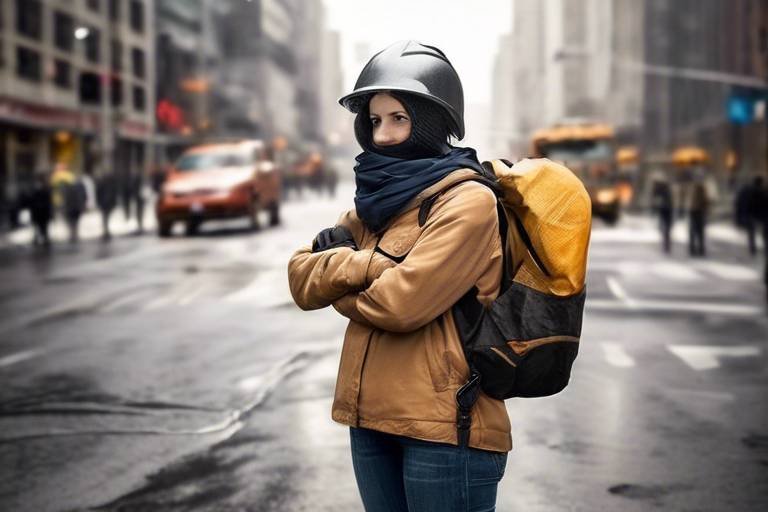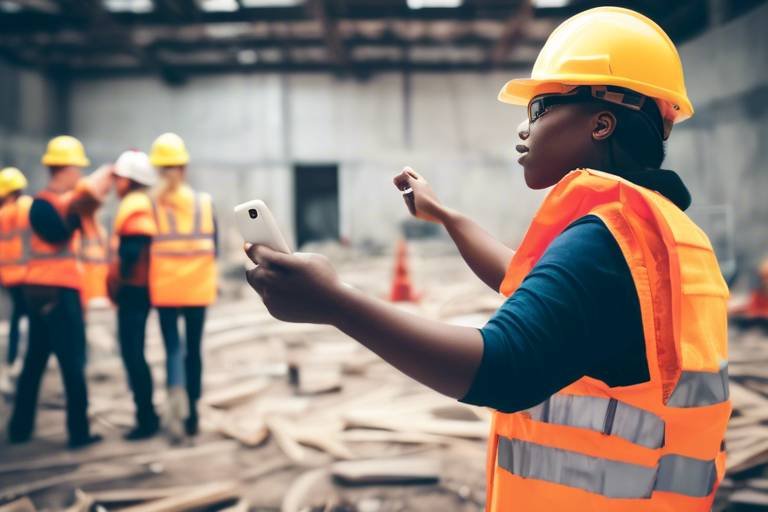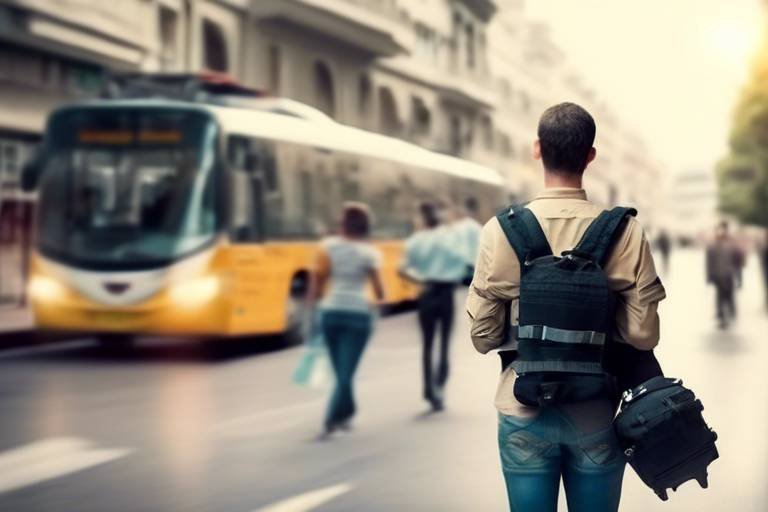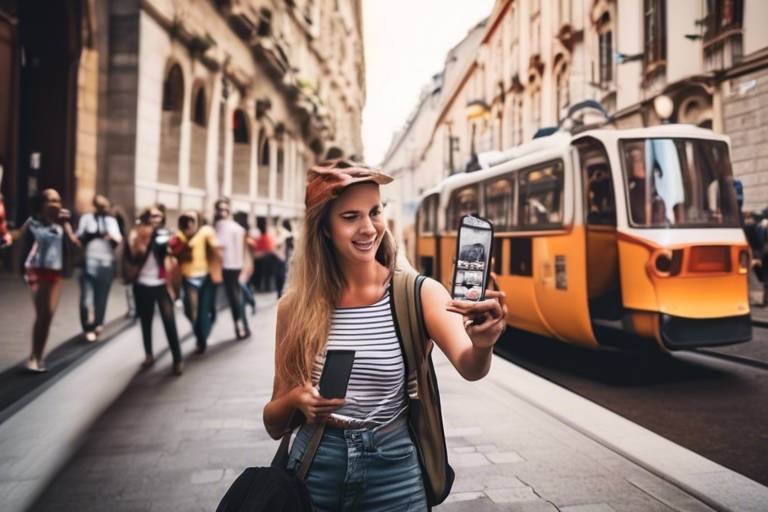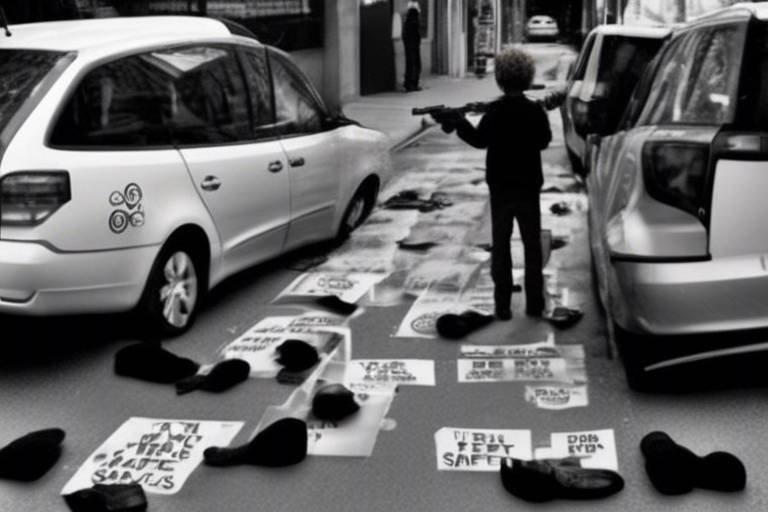Essential Safety Tips for Urban Dwellers
Living in a bustling city can be an exhilarating experience, but it also comes with its own set of challenges, especially regarding safety. Urban environments are often vibrant and full of life, yet they can also harbor risks that require vigilance and preparation. In this article, we will delve into essential safety tips tailored specifically for urban dwellers, focusing on personal security, home safety, and situational awareness. By implementing these strategies, you can enhance your well-being and enjoy the urban lifestyle with greater peace of mind.
Understanding your surroundings and being aware of potential risks can significantly improve personal safety. In an urban setting, it’s crucial to stay alert and recognize dangerous situations. One effective strategy is to maintain a heightened sense of awareness while walking through the city. This means not only being aware of your immediate environment but also understanding the dynamics of the neighborhood you are in. For instance, if you notice a group of individuals behaving suspiciously, it’s wise to change your route or seek a more populated area. Always trust your instincts—if something feels off, it probably is.
Moreover, consider adopting a few personal safety habits:
- Stay off your phone: While it’s tempting to scroll through social media or check messages while walking, this can distract you from your surroundings.
- Walk with purpose: Maintain a confident posture, and walk briskly, as this can deter potential threats.
- Use well-lit routes: When possible, stick to well-lit streets, especially at night, to reduce the risk of encountering danger.
Securing your home is vital for urban dwellers. With higher population density comes an increased chance of break-ins or theft. Implementing essential practices to protect your living space can make a significant difference. Start by ensuring that all entry points to your home are secure. This includes doors, windows, and even garage entrances. Reinforce these areas with quality locks and consider installing deadbolts for added security.
Selecting high-quality locks for doors and windows is crucial. Not all locks are created equal, and investing in robust locking mechanisms can enhance your home security against break-ins. Consider the following types of locks:
| Type of Lock | Description | Effectiveness |
|---|---|---|
| Deadbolt | A sturdy lock that extends a bolt into the door frame. | High |
| Smart Lock | A lock that can be controlled via smartphone apps. | Medium to High |
| Chain Lock | A supplementary lock that adds an extra layer of security. | Low to Medium |
Incorporating smart technology can further boost home security. Devices like smart cameras and alarms provide real-time monitoring and alerts for potential threats. Imagine being able to check your home’s security from anywhere in the world with just a tap on your smartphone! These technologies not only deter criminals but also give you peace of mind when you’re away. Consider investing in a comprehensive security system that includes motion detectors, door/window sensors, and surveillance cameras.
Participating in or establishing a neighborhood watch can foster community safety. When residents collaborate, they create a network of vigilance that deters crime. These programs encourage neighbors to look out for one another, share information about suspicious activities, and promote a sense of community. If your area doesn’t have a neighborhood watch, consider starting one! It’s a great way to meet your neighbors and enhance your safety.
Being prepared for emergencies is essential in urban areas. Natural disasters, power outages, or civil disturbances can happen unexpectedly. To ensure your safety during unforeseen events, outline an emergency plan with your family. Discuss where to meet, how to communicate, and what to do in various scenarios. Additionally, assembling an emergency kit stocked with essentials such as water, non-perishable food, first aid supplies, and flashlights can be a lifesaver in critical situations.
When navigating urban environments, safety while traveling is paramount. Whether you’re commuting to work, running errands, or exploring the city, being aware of your surroundings can help you avoid dangerous situations. Opt for safe transportation options, such as reputable rideshare services or public transport during peak hours. If you’re traveling late at night, consider using well-lit, populated routes and avoid isolated areas.
Public transportation can pose safety risks. While buses and trains are convenient, they can also attract pickpockets or other criminal activities. Here are some strategies to stay safe:
- Stay alert: Keep your belongings close and be aware of your surroundings.
- Avoid late-night travel: If possible, limit your use of public transport after dark.
- Choose your seats wisely: Opt for seats near the driver or in well-populated areas.
Walking in the city requires caution. To minimize risks while navigating urban streets, consider these tips:
- Stick to sidewalks: Always walk on the sidewalk and avoid alleyways.
- Stay visible: Wear bright clothing and avoid walking in dark areas.
- Limit distractions: Keep your headphones out and stay aware of your surroundings.
Q: What should I do if I feel unsafe in my neighborhood?
A: Trust your instincts. If you feel unsafe, change your route, seek a populated area, or contact local authorities.
Q: How can I improve my home security on a budget?
A: Consider reinforcing your doors and windows with quality locks, installing motion-sensor lights, and using simple security cameras that connect to your smartphone.
Q: Are neighborhood watch programs effective?
A: Yes! Studies show that neighborhoods with active watch programs experience lower crime rates and increased community engagement.

Personal Safety Awareness
Living in an urban environment can be exhilarating, but it also comes with its own set of challenges, especially when it comes to personal safety. Being aware of your surroundings is not just a good habit; it’s a crucial skill that can save your life. Think of it like driving a car—just as you wouldn’t take your eyes off the road, you shouldn’t overlook the people and situations around you. Awareness is your first line of defense against potential threats.
One effective strategy to enhance your personal safety is to develop a heightened sense of awareness. This means not just looking at your phone while walking down the street but actively observing your environment. Pay attention to the people around you, their behavior, and any unusual activities. If something feels off, trust your instincts. Your gut feeling is often your best guide when it comes to assessing risk.
It's also beneficial to familiarize yourself with the neighborhood you live in. Knowing the safest routes, the locations of emergency services, and the general layout of your area can make a significant difference. For instance, if you know where the nearest police station is, you can feel more secure when you’re out and about. Additionally, consider making a mental note of safe havens—places like busy stores or cafes where you can seek help if needed.
Here are a few more tips to bolster your personal safety awareness:
- Stay off your phone: When walking, keep your phone in your pocket. This helps you stay alert and aware of your surroundings.
- Walk with confidence: People who appear confident are less likely to be targeted by criminals. Maintain a good posture and keep your head up.
- Use your senses: Listen to your surroundings and trust your instincts. If something doesn’t feel right, change your route or seek assistance.
Another important aspect of personal safety is knowing how to react in potentially dangerous situations. For example, if you find yourself being followed, don’t panic. Instead, try to remain calm and change your route. Head towards a crowded area or a well-lit place. If the situation escalates, don’t hesitate to call for help or contact the authorities.
In summary, personal safety awareness is about being proactive rather than reactive. It’s about empowering yourself with knowledge and strategies that can help you navigate urban environments more safely. Remember, the key is to stay alert, trust your instincts, and always have a plan. By doing so, you can significantly reduce your risk and enhance your overall safety in the city.
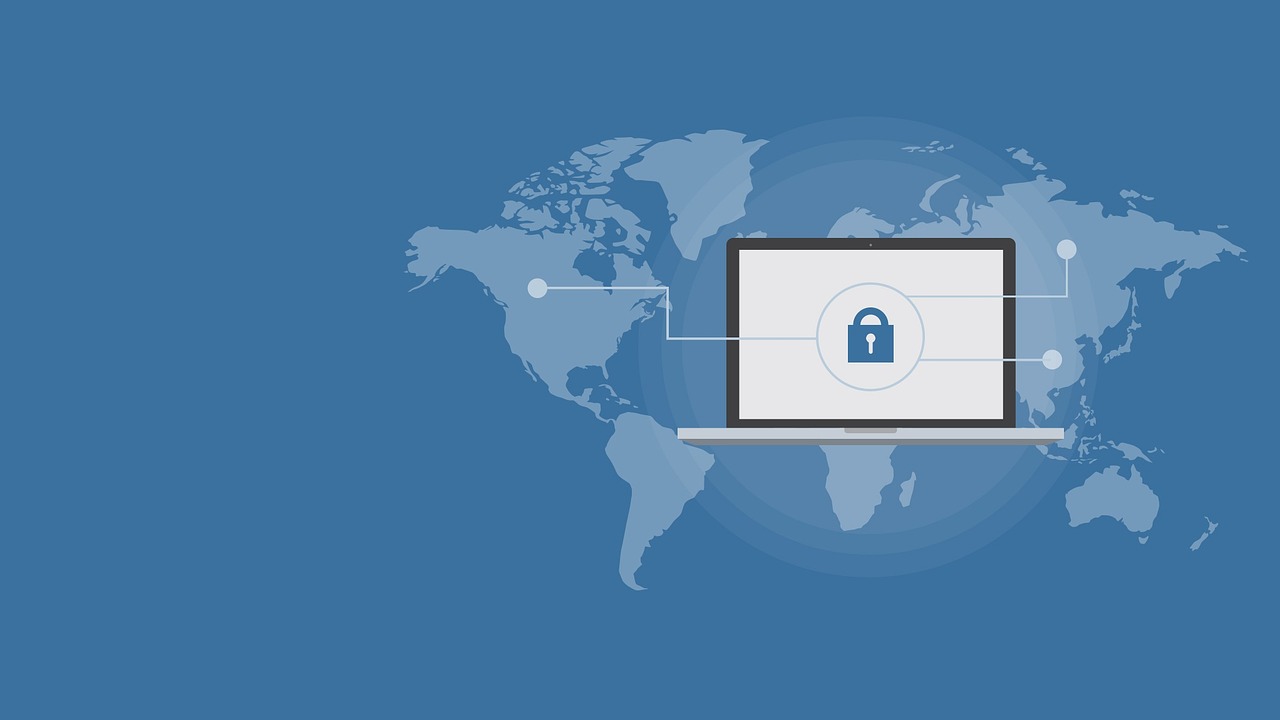
Home Security Measures
Securing your home is not just a precaution; it’s a necessity, especially for urban dwellers who may face higher risks of break-ins and theft. Imagine coming home after a long day, only to find your sanctuary violated. The thought alone is unsettling! To avoid such nightmares, implementing effective home security measures is crucial. Start by fortifying your entry points—doors and windows are the primary gateways for intruders. Consider investing in solid-core doors, which are much harder to break through compared to hollow-core doors. Additionally, reinforcing door frames and installing deadbolts can provide that extra layer of protection that makes a difference.
When it comes to locks, not all are created equal. High-quality locks can deter even the most determined burglars. For your doors, consider using deadbolts, which offer superior strength. For windows, window locks or security bars can act as effective deterrents. But here’s a tip: don’t just focus on the locks themselves; ensure that they are installed correctly, as a poorly installed lock is nearly as bad as having no lock at all. Here’s a quick comparison of different types of locks:
| Lock Type | Security Level | Best For |
|---|---|---|
| Deadbolt | High | Exterior doors |
| Lever Handle Lock | Medium | Interior doors |
| Smart Lock | High | Tech-savvy homes |
| Window Lock | Medium | Windows |
Incorporating smart home technology into your security setup can significantly enhance your protection. Devices such as smart cameras and alarms not only provide real-time monitoring but also allow you to receive alerts directly to your smartphone. Imagine being on vacation and getting an alert that someone is at your door. You can check the camera and even speak to the person through your smart doorbell! This level of control and peace of mind is invaluable.
Another effective strategy is to participate in or establish a neighborhood watch program. This community-driven initiative fosters a sense of collaboration among residents, making it harder for criminals to operate unnoticed. When neighbors look out for each other, it creates a network of vigilance that can deter crime. Consider organizing regular meetings to discuss safety concerns and share tips. Remember, safety is a shared responsibility, and together, you can create a safer environment for everyone.
Lastly, being prepared for emergencies is an essential part of home security. It's not just about preventing break-ins but also being ready for unforeseen events like natural disasters. Create an emergency plan that includes escape routes and communication strategies. Assemble a kit with essentials such as water, non-perishable food, first-aid supplies, and important documents. This proactive approach ensures that you and your loved ones are ready for anything, making your home a fortress of safety.

Choosing the Right Locks
When it comes to securing your home, choosing the right locks is like picking the right armor before heading into battle. You wouldn’t want to face an intruder with flimsy protection, would you? The locks on your doors and windows are your first line of defense, and investing in high-quality options can provide you with peace of mind. So, let’s dive into what makes a lock effective and how to select the best ones for your urban sanctuary.
First, it’s essential to understand the different types of locks available on the market. Each lock serves a unique purpose, and knowing their strengths can help you make an informed decision. Here’s a brief overview:
| Lock Type | Description | Security Level |
|---|---|---|
| Deadbolt | A sturdy lock that requires a key or thumb turn to operate. | High |
| Smart Lock | Keyless entry system that can be controlled via smartphone. | Medium to High |
| Chain Lock | A simple lock that allows you to open the door slightly while still secured. | Low to Medium |
| Padlock | A portable lock that can secure gates, sheds, or other items. | Varies |
Among these options, deadbolts are often regarded as the gold standard for home security. They provide a higher level of protection compared to standard doorknob locks, which can be easily picked or bumped. When selecting a deadbolt, look for one that is rated Grade 1, as it indicates the highest level of security. Remember, a lock is only as strong as its installation, so ensure that the deadbolt is properly fitted into the door frame.
In today’s tech-savvy world, smart locks are gaining popularity. These locks offer convenience and can be controlled remotely, allowing you to lock or unlock your door from anywhere. However, it’s essential to choose a reputable brand that prioritizes security features, such as encryption and two-factor authentication. While smart locks can be a great addition to your home security, they should ideally be used in conjunction with traditional locks for enhanced protection.
Another critical aspect to consider is the locking mechanism itself. Look for locks that have anti-drill and anti-pick features. These additional security measures can deter would-be intruders who may try to manipulate the lock. Additionally, ensure that the locks you choose are made from durable materials, such as hardened steel, to withstand brute force attacks.
Lastly, don’t overlook the importance of securing your windows. Many people focus solely on their doors, but unsecured windows can be an easy entry point for burglars. Consider installing window locks or using secondary locking devices to enhance security. Remember, a comprehensive approach to locking down your home will significantly reduce the risk of a break-in.
In conclusion, choosing the right locks is a crucial step in safeguarding your home. By understanding the different types of locks, their security levels, and installation best practices, you can create a robust defense against potential intruders. After all, your home should be a fortress where you feel safe and secure, allowing you to enjoy the urban lifestyle without worry.

Smart Home Technology
In today's fast-paced urban lifestyle, has emerged as a game-changer for enhancing security and convenience. Imagine being able to monitor your home from anywhere in the world with just a few taps on your smartphone! This technology not only adds a layer of safety but also provides peace of mind, allowing you to focus on your daily activities without constantly worrying about your home’s security.
One of the most popular smart home devices is the smart camera. These cameras can be installed both indoors and outdoors, offering real-time video feeds directly to your mobile device. Whether you’re at work, on vacation, or simply out for the evening, you can check in on your property anytime. Many models even come equipped with motion detection, sending alerts to your phone when unexpected movement is detected. This feature can be particularly beneficial in urban areas where crime rates may be higher.
Another essential component of a smart security system is the smart alarm system. Unlike traditional alarms, these systems can be customized to your specific needs. They can integrate with other smart devices, allowing for a coordinated response in case of an emergency. For example, if a door sensor is triggered, the alarm can sound, and the smart camera can start recording, all while notifying you and the authorities. This interconnectedness creates a robust safety net for urban dwellers.
Furthermore, smart locks are revolutionizing home security. These locks can be controlled remotely, allowing you to lock or unlock your doors from anywhere. Imagine being at work and realizing you forgot to lock the front door; with a smart lock, you can secure your home instantly. Some models even offer features like temporary access codes, so you can grant entry to trusted visitors without needing to be there physically.
However, it's important to consider the potential risks associated with smart home technology. As much as it enhances security, it also opens up possibilities for hacking. To mitigate these risks, ensure that all your devices are updated regularly and use strong, unique passwords. Additionally, consider setting up a dedicated network for your smart devices to keep them separate from your personal devices, reducing the risk of unauthorized access.
In conclusion, incorporating smart home technology into your urban living space can significantly enhance your security measures. By investing in smart cameras, alarms, and locks, you can create a safer environment for yourself and your loved ones. Remember, the key is to stay informed and proactive about your home security. After all, a secure home is a happy home!
- What are the benefits of smart home technology? Smart home technology offers enhanced security, convenience, and peace of mind by allowing remote monitoring and control of your home.
- Can smart home devices be hacked? Yes, smart devices can be vulnerable to hacking. It's crucial to use strong passwords and keep your devices updated to minimize risks.
- Do I need a professional to install smart home devices? While some devices can be installed easily by homeowners, others may require professional installation for optimal performance.
- Are smart home devices expensive? The cost of smart home devices varies widely, but there are options available for every budget, making it accessible for most urban dwellers.
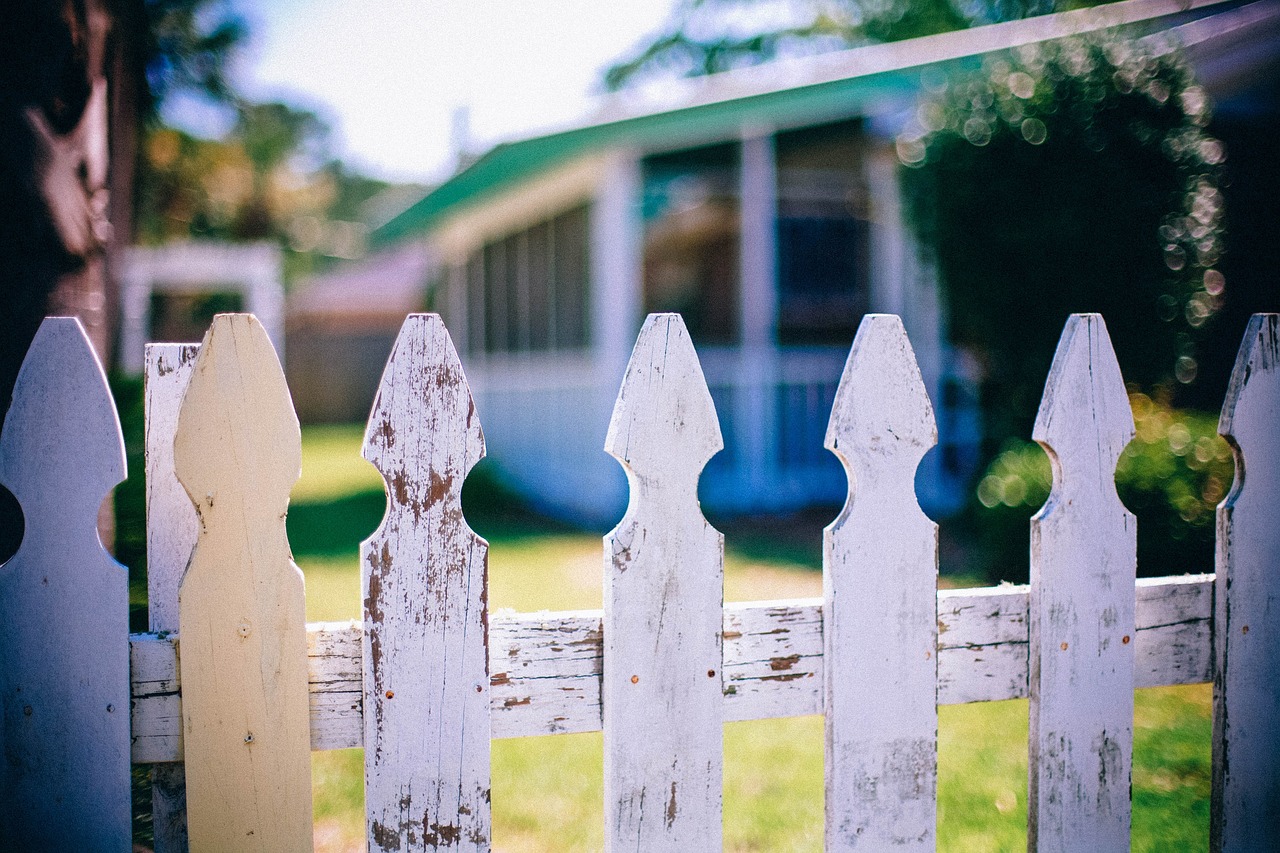
Neighborhood Watch Programs
Neighborhood watch programs are a fantastic way to enhance community safety and foster a sense of belonging among residents. Imagine living in a neighborhood where everyone looks out for one another; it’s like having a built-in security system made up of vigilant neighbors. These programs encourage residents to take an active role in maintaining the safety of their area, creating a stronger community bond and reducing crime rates.
At the heart of a neighborhood watch program is the principle of community collaboration. Residents come together to share information about suspicious activities, organize patrols, and participate in safety meetings. This collective effort not only helps in deterring crime but also builds trust and camaraderie among neighbors. You know that feeling when you can borrow a cup of sugar from your neighbor? Now imagine that same spirit of cooperation applied to keeping your community safe!
Here are some key benefits of establishing a neighborhood watch program:
- Increased Awareness: Residents become more alert to unusual activities, which can lead to quicker reporting of potential crimes.
- Crime Deterrence: Just the presence of a watchful community can discourage criminal behavior.
- Community Engagement: It fosters a sense of belonging and encourages residents to interact with one another.
- Resource Sharing: Neighbors can share tips and resources for home security, making everyone feel more secure.
To start a neighborhood watch program, it’s essential to gather interested residents and hold an initial meeting. Discuss the goals of the program, establish communication methods (like a group chat or bulletin board), and identify key areas that need attention. It’s also helpful to involve local law enforcement; they can provide valuable insights and resources to make your program more effective.
In addition to regular meetings and patrols, consider organizing community events such as safety workshops or neighborhood clean-ups. These activities not only promote safety but also strengthen community ties. Remember, the more engaged everyone is, the more successful the program will be!
In conclusion, neighborhood watch programs are a powerful tool for urban dwellers looking to enhance their safety and community spirit. By coming together, residents can create a safer environment for everyone, making their neighborhood a place where people feel secure and connected.
Q: How do I start a neighborhood watch program?
A: Gather interested neighbors, hold an initial meeting to discuss goals, and involve local law enforcement for support and resources.
Q: What if my neighborhood already has a watch program?
A: Get involved! Attend meetings, participate in activities, and contribute your ideas to strengthen the existing program.
Q: Are neighborhood watch programs effective?
A: Yes, studies have shown that they can significantly reduce crime rates and increase community engagement.
Q: How often should we meet?
A: Regular meetings, whether monthly or quarterly, help maintain interest and keep everyone informed of any issues or updates.
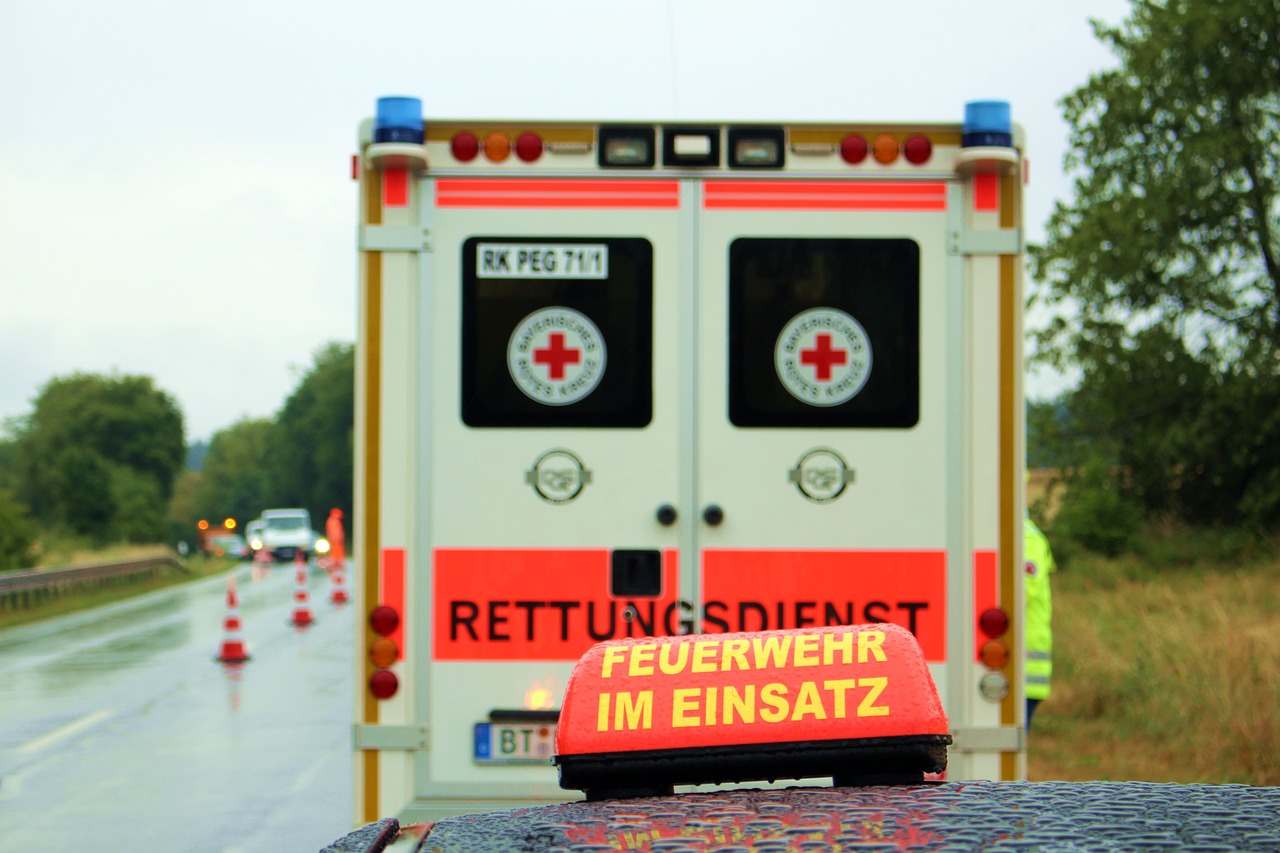
Emergency Preparedness
Being prepared for emergencies is not just a good idea; it’s a necessity, especially for those living in bustling urban environments. The unpredictable nature of city life can throw all sorts of surprises your way—natural disasters, power outages, or even unexpected civil disturbances. So, how can you ensure that you and your loved ones are ready to face these challenges head-on? The answer lies in creating a comprehensive emergency plan and assembling a well-thought-out emergency kit.
First things first, let's talk about the emergency plan. This isn't just a fancy document; it’s your roadmap to safety when things go south. Start by identifying the various types of emergencies that could occur in your area. For instance, if you live in a region prone to earthquakes, your plan should include specific actions to take during such an event. Likewise, if your city experiences severe storms, knowing how to respond can save lives. Make sure to discuss this plan with everyone in your household, so everyone is on the same page. Consider holding practice drills to make sure everyone knows what to do when the time comes.
Next up is your emergency kit. Think of it as your survival toolbox, packed with essential items that will help you weather the storm—literally and figuratively. Here’s a quick rundown of what to include:
- Water: At least one gallon per person per day for at least three days.
- Food: Non-perishable items that can last for several days, like canned goods and energy bars.
- First Aid Kit: A well-stocked kit can make a world of difference in emergencies.
- Flashlight: Power outages can happen anytime, so having a flashlight with extra batteries is crucial.
- Multi-tool: Useful for a variety of situations, from opening cans to making repairs.
- Important Documents: Keep copies of essential documents like IDs, insurance papers, and medical records in a waterproof bag.
Once your kit is assembled, store it in a location that is easily accessible. Ideally, this should be in a central area of your home where everyone knows to go during an emergency. This can be a closet or a designated corner in your living room. Don't forget to check and replenish your supplies every six months. Just like a car needs regular maintenance, your emergency kit needs a little TLC too!
Another critical aspect of emergency preparedness is staying informed. Sign up for local alerts and warnings so that you are always in the loop about potential threats. Many cities offer text or email alerts that can provide you with real-time information about emergencies in your area. Being aware of your surroundings and knowing what to expect can significantly reduce panic and confusion when a crisis occurs.
Lastly, don’t underestimate the power of community. Connect with your neighbors and discuss emergency plans together. You might find that pooling resources and knowledge can make your entire block more resilient. Consider forming a local emergency response group or participating in community preparedness workshops. Remember, in times of crisis, a strong community can be your best ally.
In summary, emergency preparedness is all about being proactive rather than reactive. By creating a solid emergency plan, assembling a comprehensive kit, staying informed, and engaging with your community, you can significantly enhance your safety and peace of mind. After all, when it comes to emergencies, it’s better to be over-prepared than under-prepared!
Q: How often should I update my emergency kit?
A: It’s recommended to check and update your emergency kit every six months to ensure that food, water, and other supplies are fresh and usable.
Q: What should I do if I have pets?
A: Include pet supplies in your emergency kit, such as food, water, and any medications your pets may need. Make sure to have a plan for their safety as well.
Q: How can I stay informed during an emergency?
A: Sign up for local alerts and warnings through your city or county's emergency management office. Also, consider downloading emergency apps that provide real-time updates.
Q: What should I do if I don't have a lot of space for an emergency kit?
A: You can create a smaller, more compact kit that includes the most essential items. Focus on multi-use tools and items that can serve multiple purposes.
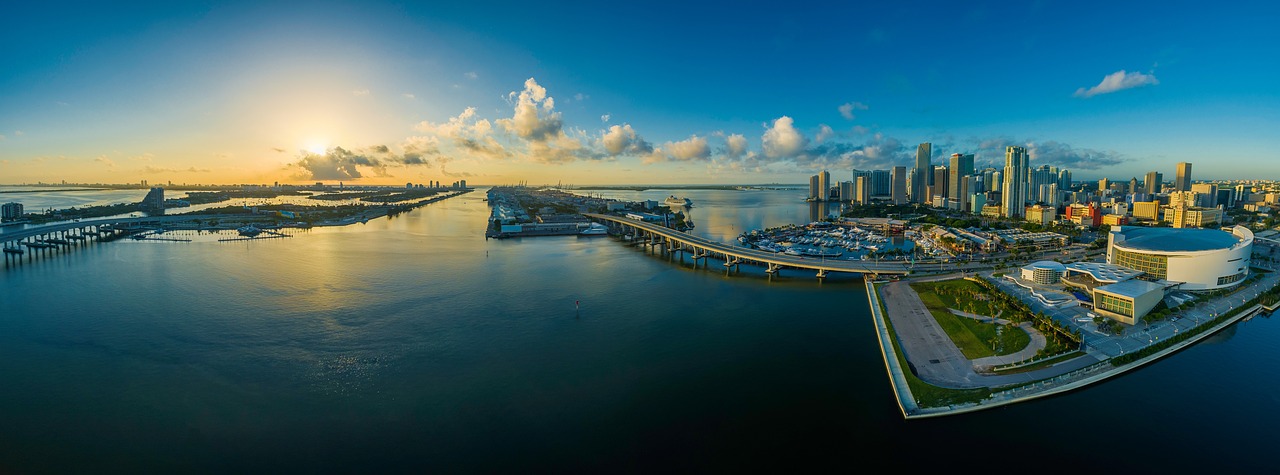
Travel Safety Tips
When it comes to exploring the vibrant streets of a city, safety should always be at the forefront of your mind. Urban environments can be bustling and exciting, but they also come with their own set of challenges and risks. So, how can you ensure that your adventures are both enjoyable and secure? First and foremost, it's essential to stay aware of your surroundings. This means keeping your head up and your eyes open, rather than getting lost in your phone or the sights around you. Think of it like navigating through a crowded market—if you’re not paying attention, you might miss out on the important details or, worse, find yourself in a precarious situation.
Using public transportation is a common way to get around, but it’s not without its safety concerns. When hopping on a bus or train, be mindful of the time of day. Late-night travel can increase your risk, so if you can, opt for earlier rides. Also, try to sit near the driver or in well-lit areas where there are other passengers. If you notice someone behaving suspiciously, trust your instincts and move to another area. Remember, it’s always better to be cautious than to put yourself in harm's way.
Another critical aspect of travel safety is choosing safe walking practices. Urban areas can be tricky to navigate on foot, especially with heavy traffic and distracted drivers. When walking, always use crosswalks and obey traffic signals. Additionally, consider your route carefully. Are there streets that are well-lit and populated? Stick to those, especially at night. It’s also a good idea to avoid wearing headphones or being overly engrossed in your phone, as this can distract you from potential dangers. Instead, stay alert and be aware of the people and vehicles around you.
In terms of personal belongings, it's wise to keep your valuables secure and out of sight. Avoid flaunting expensive jewelry or electronics, as this can attract unwanted attention. A crossbody bag or a secure backpack can help keep your items close and deter pickpockets. If you’re using a smartphone for navigation, do so discreetly. You might even consider investing in a portable charger to avoid the need to stop and fumble with your device in public.
Lastly, don’t underestimate the power of a buddy system. If you’re exploring a new area, try to travel with a friend or at least let someone know your plans. This way, someone is aware of your whereabouts, and you can look out for each other. After all, there’s safety in numbers!
- What should I do if I feel unsafe while traveling?
If you ever feel uncomfortable or threatened, seek help immediately. Look for nearby security personnel or enter a public place where you can find safety. - How can I protect my belongings while using public transportation?
Use anti-theft bags, keep your valuables close to your body, and be aware of your surroundings to prevent theft. - Are there specific times I should avoid public transportation?
Late-night travel can increase risks, so try to use public transport during busier hours when there are more people around.
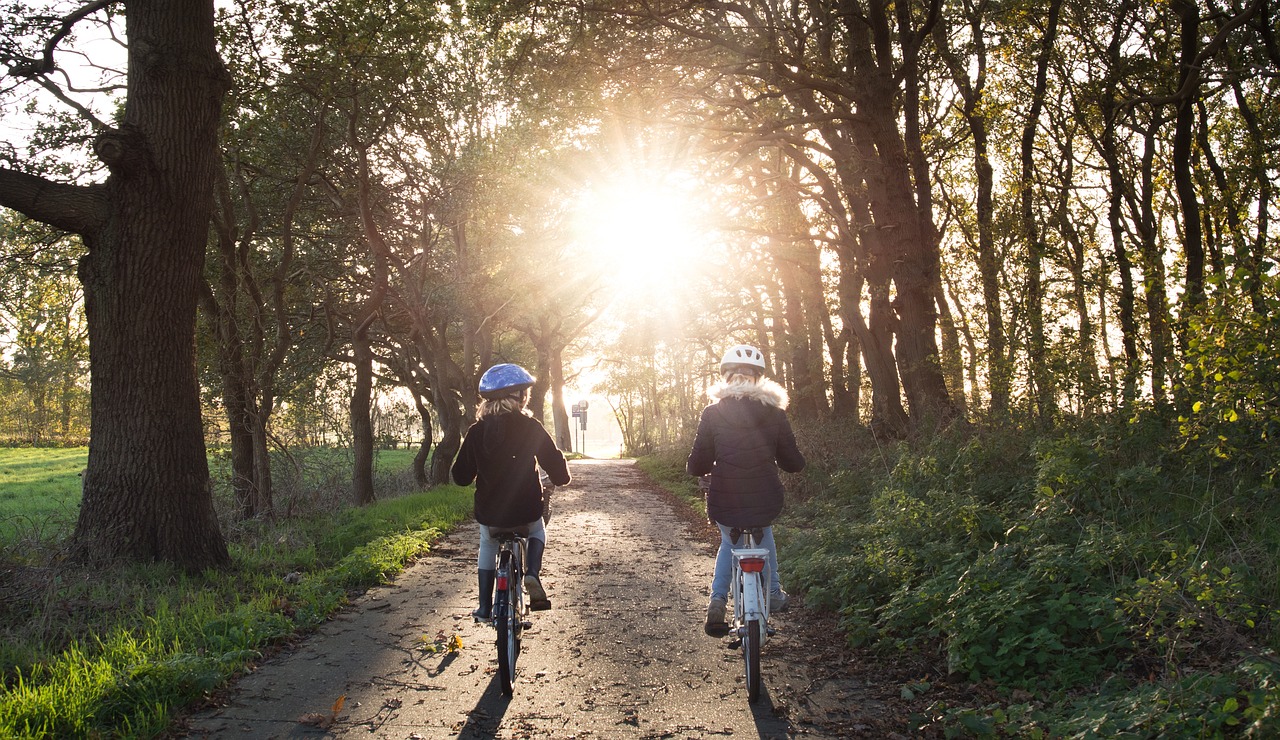
Using Public Transportation Safely
Navigating through a bustling city often means relying on public transportation, which can be a convenient and cost-effective way to get around. However, it’s essential to prioritize your safety while doing so. Think of public transportation as a double-edged sword: it can either be a smooth ride or a bumpy journey if you’re not cautious. So, how can you ensure your travel experience is as safe as possible? Here are some strategies to keep in mind.
First and foremost, always stay aware of your surroundings. This means keeping your head up and your eyes open. Avoid getting lost in your phone or other distractions. Instead, take a moment to observe the people around you and the environment. If something feels off, trust your instincts. You wouldn’t walk into a dark alley without a second thought, right? The same principle applies to public transport. If you notice someone behaving suspiciously, it’s perfectly acceptable to move to a different area of the vehicle or even wait for the next bus or train.
Another crucial aspect is to plan your route ahead of time. Familiarize yourself with the public transportation system in your area, whether it’s buses, subways, or trams. Knowing the stops, transfer points, and travel times can help you feel more confident and secure. Here’s a tip: use apps or websites that provide real-time updates on schedules and delays. This way, you won’t be left stranded in an unfamiliar area or waiting for an extended period.
When it comes to late-night travel, it’s wise to take extra precautions. If you must travel after dark, consider these safety tips:
- Opt for well-lit and populated stops or stations.
- Travel with a friend if possible; there’s safety in numbers.
- Have your phone ready to call for a ride-share service if necessary.
Moreover, be mindful of your belongings. Keep your bag close to your body and avoid displaying valuable items like expensive electronics or jewelry. Thieves often look for easy targets, and showing that you’re aware of your belongings can deter potential threats. Think of your bag as a shield; the closer it is to you, the safer you are.
Lastly, don’t hesitate to seek help if you feel uncomfortable. Most public transportation systems have staff members or security personnel on-site. If you’re feeling uneasy, approach them for assistance. Remember, it’s always better to be safe than sorry.
In summary, using public transportation safely requires a combination of awareness, planning, and precaution. By being vigilant and prepared, you can transform your travel experience into a secure and enjoyable adventure. So, the next time you hop on a bus or train, keep these tips in mind, and ride with confidence!
Q: What should I do if I feel unsafe on public transportation?
A: If you feel unsafe, try to move to a different area of the vehicle or wait for the next bus or train. You can also seek assistance from staff or security personnel.
Q: How can I keep my belongings safe while using public transport?
A: Keep your bag close to your body, avoid displaying valuables, and be aware of your surroundings to deter potential thieves.
Q: Is it safer to travel during the day or at night?
A: Generally, it is safer to travel during the day when more people are around. If you must travel at night, choose well-lit and populated areas and consider traveling with a friend.
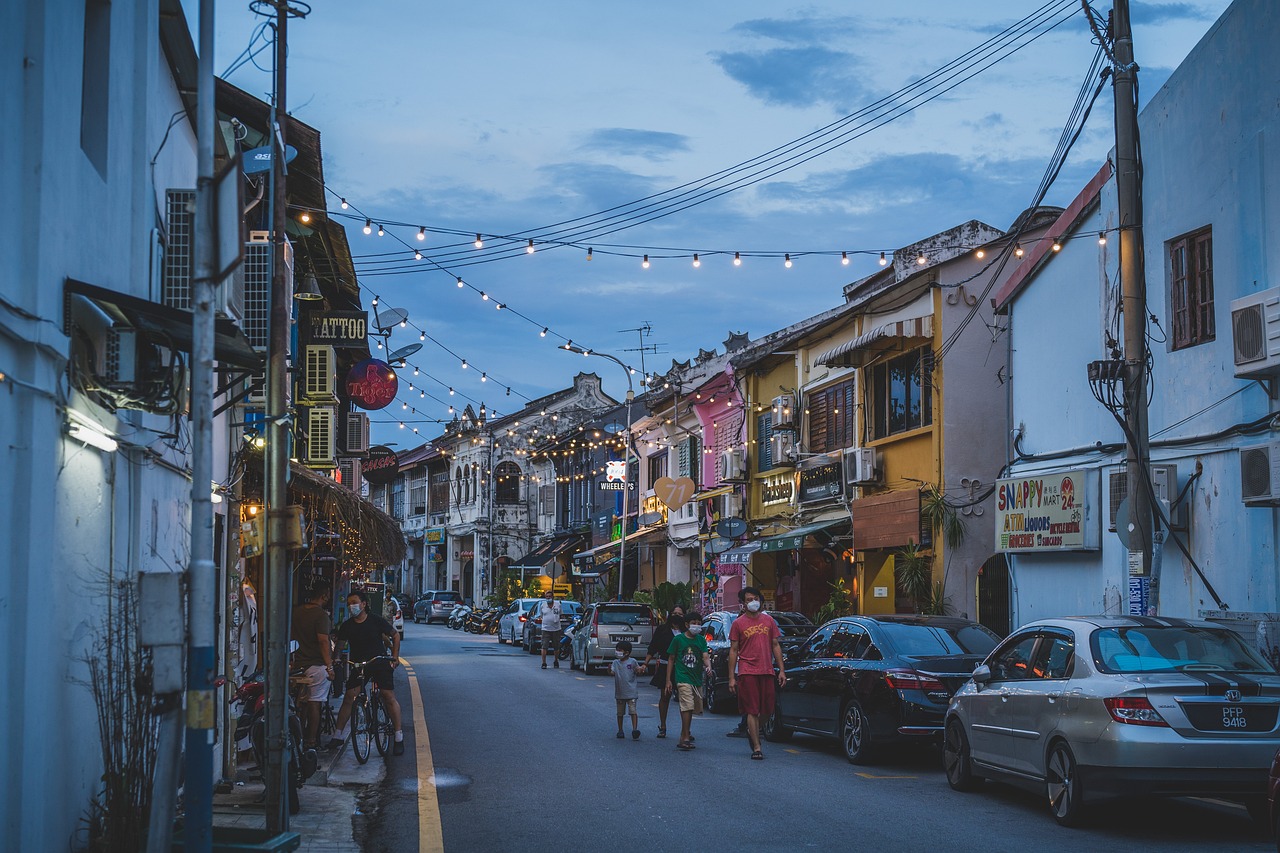
Safe Walking Practices
Walking in urban environments can be both exhilarating and daunting. The hustle and bustle of city life creates a unique atmosphere, but it also comes with its own set of challenges. To ensure that your walking experience is as safe as possible, it’s essential to adopt certain practices that can help you navigate the streets with confidence. First and foremost, always stay aware of your surroundings. This means keeping your head up and your eyes open, rather than being glued to your phone or headphones. Just like a deer in the woods, you need to be alert to potential dangers lurking around every corner.
When choosing your walking routes, opt for well-lit and populated areas. Stick to main streets rather than alleys or side streets, especially during the evening. This not only increases your visibility but also enhances your safety by ensuring that there are other people around. If you're walking alone at night, consider carrying a small flashlight or using your phone’s flashlight feature to illuminate your path. Remember, walking in the dark can hide potential hazards, and a little light can go a long way.
Another crucial aspect of safe walking is staying visible. Wear bright or reflective clothing, particularly if you’re out during dawn or dusk. Just as a lighthouse guides ships safely to shore, being visible can help drivers and cyclists see you more easily. If you’re walking in a group, make sure to walk side by side rather than in a single file, which can make you less visible to others. Additionally, always cross streets at designated crosswalks and obey traffic signals. It’s a simple yet effective way to avoid accidents.
Distractions can be a major hazard while walking. Avoid texting or browsing social media while on the move. Instead, take a moment to stop and check your messages. Your safety is more important than a quick reply! If you need to listen to music or podcasts, keep the volume low enough that you can still hear what’s happening around you. Just like a tightrope walker needs to maintain focus, so do you when navigating busy streets.
In case you find yourself in an uncomfortable situation, it’s wise to have a plan. Familiarize yourself with nearby landmarks and know where to find help if needed. Consider carrying a personal safety device, such as a whistle or pepper spray, to deter potential threats. It’s also helpful to share your location with a friend or family member, especially if you’re walking in an unfamiliar area.
Lastly, if you’re walking with children, teach them about safe walking habits early on. Instilling these practices in young ones will help them develop a sense of awareness as they grow. Just like planting a seed, nurturing safety awareness will help them blossom into responsible pedestrians.
Q: What should I do if I feel unsafe while walking?
A: If you feel unsafe, try to move to a well-lit and populated area. If you're in immediate danger, call for help or use your phone to contact emergency services.
Q: How can I make my kids safe while walking?
A: Teach them to stay aware of their surroundings, use crosswalks, and avoid distractions like phones. Walking in groups can also enhance their safety.
Q: Are there specific times when walking is riskier?
A: Yes, walking late at night or in poorly lit areas can increase risks. It's best to avoid these situations whenever possible.
Q: Should I carry anything with me while walking?
A: It’s a good idea to carry a phone, a small flashlight, and a personal safety device. Having these items can help you stay safe and connected.
Frequently Asked Questions
- What are the best ways to improve personal safety in urban areas?
Improving personal safety starts with being aware of your surroundings. Always stay alert, avoid distractions like your phone, and trust your instincts. If something feels off, it probably is. Consider taking self-defense classes and familiarize yourself with the safest routes in your neighborhood.
- How can I enhance the security of my home?
To enhance home security, invest in high-quality locks for doors and windows. Consider installing a security system with cameras and alarms. Reinforce entry points with deadbolts and security bars. Don't forget to maintain good outdoor lighting and trim any bushes that could conceal intruders.
- What types of locks are most effective for home security?
Deadbolts are often considered the best for home security due to their strength and resistance to forced entry. Smart locks add convenience and can be controlled remotely. Always look for locks that are rated by security organizations to ensure they meet safety standards.
- How does smart home technology improve security?
Smart home technology enhances security by providing real-time monitoring through cameras and alerts for unusual activity. You can control your security systems from your smartphone, allowing you to check in on your home no matter where you are. This technology can also integrate with alarms and motion sensors for added protection.
- What are the benefits of a neighborhood watch program?
Neighborhood watch programs foster a sense of community and increase vigilance among residents. They serve as a deterrent to crime, as potential offenders are less likely to target areas where neighbors are actively watching out for one another. Plus, they can help build stronger relationships within the community.
- How can I prepare for emergencies in the city?
Creating an emergency plan is crucial. Identify escape routes, establish a meeting point, and ensure everyone in your household knows the plan. Assemble an emergency kit with essentials like water, food, first aid supplies, and important documents. Regularly review and update your plan as needed.
- What safety tips should I follow when using public transportation?
When using public transportation, always stay aware of your surroundings. Avoid sitting near exits if possible, and keep your belongings secure. Try to travel during busier times and avoid late-night rides. If you feel uncomfortable, don't hesitate to move to a different area or wait for the next vehicle.
- What are safe walking practices in the city?
To stay safe while walking in the city, choose well-lit, populated routes. Stay visible by wearing bright clothing, especially at night. Avoid using your phone or wearing headphones, as these can distract you from your surroundings. Trust your instincts, and if you feel uneasy, seek help or change your route.

